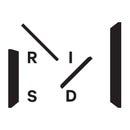Introduction: Work in Process: Machine Knitting
In the 1950s and 60s, knitting machines were marketed to young housewives. Although there were several brands, machines made by Brother were among the most popular. In the last few decades, home knitting machines have become less widely available, but are still used by hobbyists, textile artists, and apparel designers. RISD has several Brother knitting machines in the Textiles Department, where students regularly use them.
Peyton North (RISD BFA 2015, Textiles) shows us how to create stripes on a vintage Brother knitting machine.
Step 1: First Thread the Machine, Then Cast On.
To thread the machine, bring the yarn through the tension arm and the carriage. To cast on, wrap the yarn around each of the needles using an e-wrap. This technique comes from the lowercase cursive e shape created when wrapping yarn around the needles.
The tension arm (also called tension rod or tension pole) is the antenna-like piece that stems from the back and reaches upwards. The carriage is located on the bed of the machine; it feeds the yarn to the needles as they knit. To cast on is to place stitches on the needles to begin or expand the knitted work.
Step 2: Attach a Comb Weight and Claw Weights.
Distribute the weights evenly. This ensures uniform stitches and stops the knitting from tangling. The yarn, the type of stitch, and the size of the piece affect weight distribution. A lack of tension can cause the stitches to contract, resulting in an hourglass shape.
The comb weight or cast-on comb is a thin rectangular piece with long, protruding teeth that helps establish the first row of stitches on the needles. It comes in different widths to accommodate various numbers of stitches. Claw weights are smaller metal pieces that help the formation of stitches by drawing the fabric down from the machine. By repositioning these weights, moving them up about every 20 rows, the edge stitches form consistently and evenly.
Step 3: Push the Carriage and Begin to Knit.
The carriage (a cam box or box carriage) is a mechanism that engages the yarn and controls needle actions. It is passed across the bed of needles, causing movements that produce the next stitch.
The knit stitch is usually made with the yarn at the back of the work, whereas the purl stitch is made with the yarn at the front. To create a stitch, a needle is inserted into the front of a loop. It catches the yarn and brings it through, forming a new loop.
Step 4: Change Colors by Cutting the First Yarn and Inserting the Second Into the Carriage.
After knitting the desired length of the first color, change colors. Switching colors creates a striped pattern. On the purl side, an intersecting row of stitches will appear between the two colors.
See Sonia Rykiel’s woman’s cardigan with white shawl collar, double-button front closure, and three welt pockets (1986). Made of wool and rabbit hair, the polychrome stripe suit is machine knit.
Step 5: Cast Off.
To cast off, use a chain stitch. This prevents unraveling and finishes the sample.
In casting off (also referred to as binding off), the final loop of a wale (the column of stitches running lengthwise) is passed over the loop of an adjacent stitch. The chain stitch is an ornamental stitch in which stitches are crocheted in a chain.
This Instructable was authored by Annabeth Rodgers Faucher (RISD BFA 2015, Film/Animation/Video). You can read the full article on our website.





